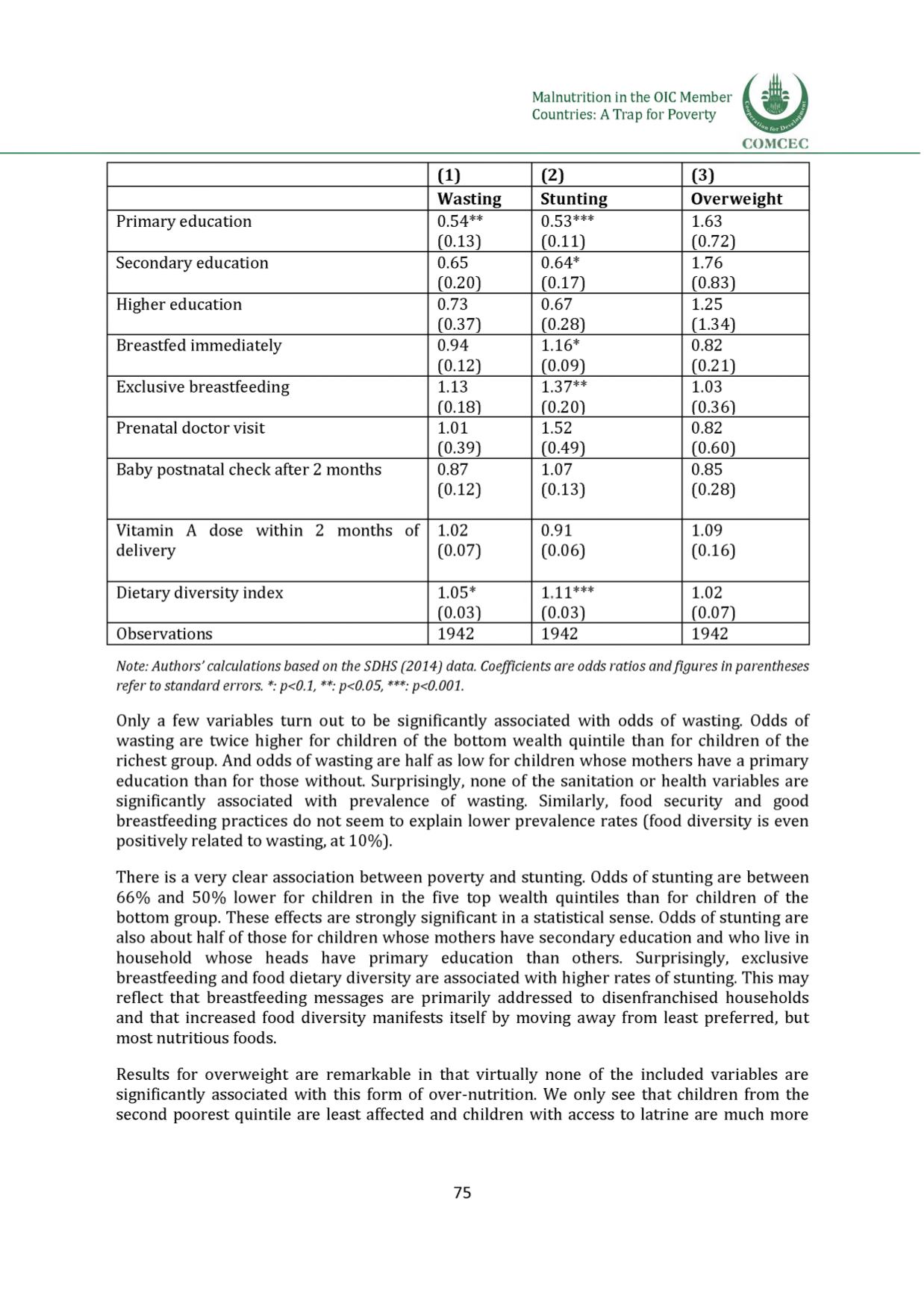

Malnutrition in the OIC Member
Countries: A Trap for Poverty
COMCEC
(
1
)
(
2
)
(3)
Wasting Stunting
Overweight
Primary education
0.54**
0.53***
1.63
(0.13)
(
0
.
1 1
)
(0.72)
Secondary education
0.65
0.64*
1.76
(
0
.
2 0
)
(0.17)
(0.83)
Higher education
0.73
0.67
1.25
(0.37)
(0.28)
(1.34)
Breastfed immediately
0.94
1.16*
0.82
(
0
.
1 2
)
(0.09)
(
0
.
2 1
)
Exclusive breastfeeding
1.13
1.37**
1.03
(0.18)
(
0
.
2 0
)
(0.36)
Prenatal doctor visit
1. 01
1.52
0.82
(0.39)
(0.49)
(0.60)
Baby postnatal check after 2 months
0.87
1.07
0.85
(
0
.
1 2
)
(0.13)
(0.28)
Vitamin A dose within
2
months of
1.02
0.91
1.09
delivery
(0.07)
(0.06)
(0.16)
Dietary diversity index
1.05*
1
1 1
***
1. 02
(0.03)
(0.03)
(0.07)
Observations
1942
1942
1942
Note: Authors' calculations based on the SDHS (2014) data. Coefficients are odds ratios andfigures in parentheses
refer to standard errors. *: p<0.1, **: p<0.05, ***: p<0.001.
Only a few variables turn out to be significantly associated with odds of wasting. Odds of
wasting are twice higher for children of the bottom wealth quintile than for children of the
richest group. And odds of wasting are half as low for children whose mothers have a primary
education than for those without. Surprisingly, none of the sanitation or health variables are
significantly associated with prevalence of wasting. Similarly, food security and good
breastfeeding practices do not seem to explain lower prevalence rates (food diversity is even
positively related to wasting, at
1 0
%).
There is a very clear association between poverty and stunting. Odds of stunting are between
6 6
% and 50% lower for children in the five top wealth quintiles than for children of the
bottom group. These effects are strongly significant in a statistical sense. Odds of stunting are
also about half of those for children whose mothers have secondary education and who live in
household whose heads have primary education than others. Surprisingly, exclusive
breastfeeding and food dietary diversity are associated with higher rates of stunting. This may
reflect that breastfeeding messages are primarily addressed to disenfranchised households
and that increased food diversity manifests itself by moving away from least preferred, but
most nutritious foods.
Results for overweight are remarkable in that virtually none of the included variables are
significantly associated with this form of over-nutrition. We only see that children from the
second poorest quintile are least affected and children with access to latrine are much more
75
















